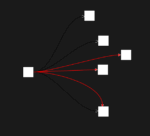Imagine a data landscape that seamlessly blends flexibility, speed, and scalability—without forcing you to compromise on performance. Sounds like the stuff of dreams? Welcome to the world of polyglot persistence. Instead of relying on a single, one-size-fits-all database, organizations are increasingly mixing and matching different database solutions to get the best of each. This approach—championed by innovative software consulting firms like ours—empowers enterprises to tackle complex data challenges without being boxed into rigid architectures. If your goal is to enhance data agility and support sophisticated analytics, polyglot persistence might just be the strategic leap you need.
Understanding Polyglot Persistence
Polyglot persistence is an architectural strategy where an organization uses multiple types of databases within a single application environment. This concept stems from the recognition that no single database technology is optimal for every use case. Relational databases shine at handling structured data with complex JOINs and ACID compliance, while NoSQL solutions such as key-value stores excel at horizontally scaling unstructured data sets. By adopting multiple database types, teams can choose the exact tool to handle each unique data problem, resulting in improved performance, enhanced maintainability, and more efficient resource usage.
From a historical perspective, businesses once gravitated toward monolithic platforms, hoping for universal databases that covered every conceivable use case. The reality, however, revealed serious gaps. As data categories splintered—ranging from transactional records to high-volume streaming data—these all-in-one solutions struggled to maintain their promise of flexibility and speed. Today’s data-driven decision-makers know better: Different types of data call for different types of databases, and polyglot persistence allows you to match each data set to its ideal environment.
When building your multi-database strategy, consider exploring various open-source options and professional services. For instance, if your architecture leans heavily on relational models, investing in PostgreSQL consulting services can strengthen your capabilities, offering both cost savings and a wealth of community-driven features. Additionally, if you want to grasp how developers’ environments can impact performance and collaboration, check out Why Mac vs Windows Is JavaScript’s BFF When Using VS Code for insights on how OS and tooling choices influence modern development workflows. Whether you’re scaling globally or focusing on niche use cases, having multiple database types in your toolbox can greatly amplify your competitive edge.
Key Advantages of a Multi-Database Approach
One of the most significant selling points of polyglot persistence is the performance boost. Traditional single-database setups often struggle when tasked with handling multiple data workloads concurrently. In a polyglot environment, you can delegate transactional data to a relational database for strong consistency, while pushing high-velocity log streams to a NoSQL database optimized for write-heavy operations. This way, each data set is processed by the database engine designed to handle its unique characteristics best, reducing bottlenecks and latency.
Equally important is the reduction of technical debt over the long term. When you try to force-fit every possible data scenario into a single database engine, workarounds abound. Developers often end up writing hacks and extra code layers that balloon complexity. By leveraging distinct databases for different tasks, you allow your teams to use built-in features that seamlessly handle each data type. This approach not only streamlines development but also simplifies maintenance over time, as each database solution can be upgraded, tweaked, or replaced independently.
Innovation thrives when organizations have the right tools at their disposal. Data insights often arise from exploring patterns and relationships within massive data sets. If you’re looking to understand how advanced queries uncover hidden patterns, explore SQL Wildcards: A Guide to Pattern Matching in Queries. And if you’re curious about the power—and potential pitfalls—of analyzing enormous data sets, read What Happens When You Give Engineers Too Much Data to see how oversupply of information can hinder progress when not managed effectively. By deploying the right database for each type of data, you can maintain higher-quality analytics while keeping storage and compute resources used efficiently.
When to Employ Multiple Database Types
Adopting polyglot persistence is a strategic decision that hinges on the nature and volume of your data. For instance, an e-commerce platform might handle product catalogs, real-time inventory levels, and customer purchase histories. In such cases, a relational database could manage inventory transactions and historical purchases—due to its ACID compliance—while a document store could store frequently changing product details in a structure that’s easy to update. The variety of data silos, from transactional data to multimedia content, makes a multi-database approach almost inevitable if you’re aiming to provide a seamless user experience.
Organizations invested in advanced analytics should also take note. If you’re running complex data mining or pattern recognition algorithms, you might want to keep raw logs or semi-structured user profiles in a Hadoop or NoSQL system. Meanwhile, aggregated or cleaned data might live in a relational SQL system optimized for reporting. This multi-pronged approach ensures each analytics layer is backed by a database technology suited to its unique performance characteristics. For instance, if you’re investigating ways to cross-promote products, The Art of Upselling: How Market Basket Analysis Can Help You Identify Complementary Products demonstrates how analyzing transaction data in the right environment can open new revenue streams.
Another strong indicator that polyglot persistence is beneficial is when you observe frequent re-engineering or painful refactoring to accommodate new data workloads. If adding a real-time streaming component to your existing SQL system feels cumbersome, that’s a red flag. Perhaps your data engineering team is spending excessive time customizing queries or indexes. Rather than forcing a single solution to do it all, you can bring in a specialized database to handle the new workload. This way, you keep your business agile and ready to pivot as customer demands and technology trends evolve.
Best Practices for Polyglot Architectures
Before embarking on a polyglot journey, draft a clear roadmap outlining how each database will fit into your overall ecosystem. This includes establishing data governance policies, specifying who owns each data source, and clarifying how data flows between systems. Consider using microservices or well-defined data pipelines to ferry data from one type of store to another. You’ll also benefit from advanced indexing and filtering. For a deeper dive into how to refine data selections for better performance, take a look at Mastering the SQL WHERE Clause: Filtering Data with Precision.
Security should remain a top priority. Multiple databases imply multiple potential points of failure, so implement robust authentication, encryption, and monitoring across all data stores. Equally pivotal is designing for scalability. One of the main perks of polyglot persistence is the ability to independently scale each component. If your new streaming service experiences a spike in demand, you can ramp up capacity on your NoSQL system without disrupting your production-grade relational database.
Finally, don’t neglect the cultural aspects of adopting a multi-database environment. Each new technology can introduce its own learning curve. Cross-training your development, DevOps, and data engineering teams is crucial for success. When each team member understands how the databases fit together, you minimize siloed knowledge and reduce friction. By integrating these best practices, you lay a stable foundation for ongoing innovation and agility in your data ecosystem.
Ultimately, polyglot persistence isn’t about chasing the latest shiny object. It’s about harnessing the right tools for the right tasks to build robust, future-proof systems. If done thoughtfully, you’ll reap the dual benefits of optimized performance and strategic flexibility, positioning your organization to adapt gracefully to the ever-shifting technological landscape.

























